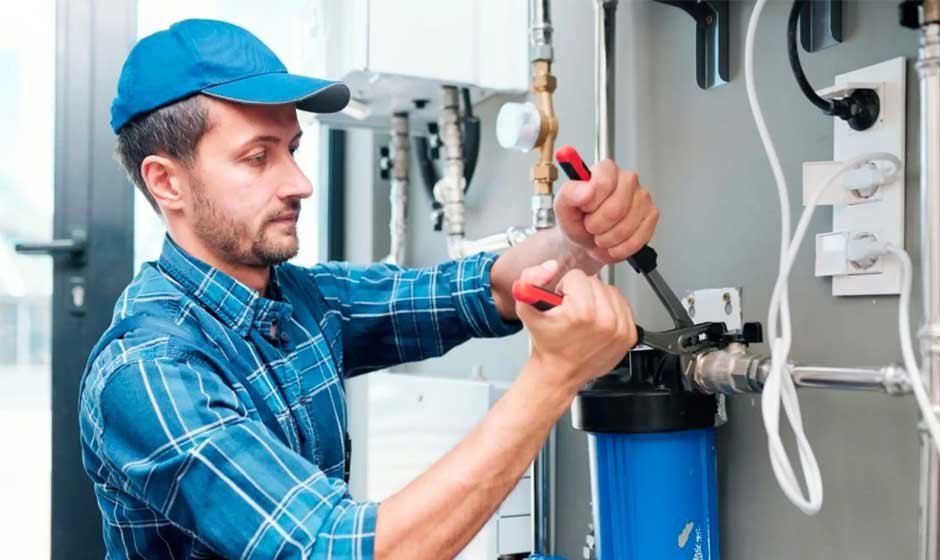In today’s world, home efficiency is more important than ever. From energy bills to water usage, homeowners are constantly looking for ways to reduce waste and improve the performance of their living spaces. While insulation, lighting, and appliances often get the spotlight, plumbing plays an equally crucial role. Modern plumbing upgrades not only enhance convenience and comfort but also significantly improve water and energy efficiency.
This guide explores the latest plumbing upgrades, how they work, and the benefits they provide for homeowners looking to create a more efficient and sustainable home.
Why Plumbing Upgrades Matter
Older plumbing systems often suffer from issues such as:
- Leaks and corrosion
- Low water pressure
- Inefficient water heating
- Frequent clogs and backups
These problems reduce home efficiency, increase utility costs, and may cause damage over time. Upgrading plumbing with modern technology addresses these issues directly, improving overall performance and saving homeowners both money and resources.
1. Low-Flow Fixtures
What They Are
Low-flow faucets, showerheads, and toilets are designed to use less water while maintaining effective performance.
How They Improve Efficiency
- Reduce water consumption without sacrificing pressure
- Lower energy costs by reducing hot water use
- Decrease strain on sewer systems
Simple Upgrade Examples
- Low-flow showerheads (1.5–2.0 gallons per minute)
- Dual-flush or high-efficiency toilets (1.28 gallons per flush)
- Faucet aerators for sinks
These small changes can collectively save thousands of gallons of water each year.
2. Tankless Water Heaters
What They Are
Unlike traditional storage water heaters, tankless systems heat water on demand, providing an endless supply without maintaining a tank of heated water.
Benefits
- Eliminate standby energy losses associated with traditional water heaters
- Reduce utility bills significantly
- Provide hot water instantly at multiple points of use
- Save space in homes where room is limited
Efficiency Impact
Tankless water heaters can increase a home’s energy efficiency by up to 30% compared to conventional tank heaters, especially in households with high hot water demand.
3. PEX Plumbing Systems
What They Are
PEX (cross-linked polyethylene) piping is flexible, durable, and resistant to corrosion. It’s a modern alternative to copper or galvanized steel pipes.
Advantages
- Faster and easier installation due to flexibility
- Fewer joints, reducing the chance of leaks
- Resistant to freezing and corrosion
- Improves water flow efficiency
Switching to PEX can reduce long-term maintenance costs and ensure smooth water delivery throughout the home.
4. Smart Plumbing Devices
Smart Leak Detectors
- Detect leaks early before they cause major water damage
- Send alerts to your smartphone for immediate action
Smart Irrigation Systems
- Adjust watering schedules based on weather, soil moisture, and plant needs
- Reduce water waste outdoors by up to 50%
Smart Water Monitors
- Track water consumption in real time
- Help identify high-usage areas and encourage conservation
Smart plumbing devices integrate technology into daily life, making your home more efficient and preventing costly repairs.
5. Pressure-Reducing Valves
What They Are
Pressure-reducing valves (PRVs) control excessive water pressure coming from the municipal supply.
How They Improve Efficiency
- Protect pipes and fixtures from unnecessary stress
- Reduce water waste from dripping faucets or shower overspray
- Enhance appliance longevity (dishwashers, washing machines)
Proper water pressure ensures systems operate efficiently and minimizes maintenance issues caused by wear and tear.
6. Water-Efficient Appliances
Modern dishwashers and washing machines are designed with water and energy efficiency in mind.
Benefits
- Use significantly less water per load compared to older models
- Reduce energy costs for heating water
- Maintain performance while saving resources
Tip: Look for ENERGY STAR® certified appliances to maximize savings and efficiency.
7. Greywater Recycling Systems
What They Are
Greywater recycling systems collect water from showers, sinks, and washing machines and reuse it for irrigation or flushing toilets.
Efficiency Benefits
- Reduces freshwater consumption
- Lowers utility bills
- Supports sustainable landscaping practices
This upgrade is particularly valuable in areas with water restrictions or drought-prone regions.
8. Pipe Insulation
Why It Matters
Uninsulated hot water pipes lose heat as water travels from the heater to fixtures.
Efficiency Improvements
- Reduces heat loss and water heating costs
- Provides hot water faster at taps and showers
- Protects pipes from freezing in colder climates
Even wrapping existing pipes with insulation sleeves can create noticeable energy savings.
9. Tankless or On-Demand Recirculation Pumps
What They Do
These systems circulate hot water efficiently through your home’s plumbing network, reducing wait time at taps and showers.
Efficiency Benefits
- Minimize wasted water while waiting for hot water
- Reduce energy use by circulating water only when needed
- Enhance comfort and convenience
Recirculation pumps make your home feel modern while conserving both water and energy.
10. Regular Plumbing Maintenance
Even with modern upgrades, routine maintenance is key for efficiency:
- Inspect for leaks in faucets, valves, and toilets
- Flush water heaters to remove sediment buildup
- Clear drains and traps to maintain water flow
- Monitor water usage for unusual spikes
Consistent maintenance ensures that all plumbing components perform optimally, protecting your investments and maximizing efficiency.










